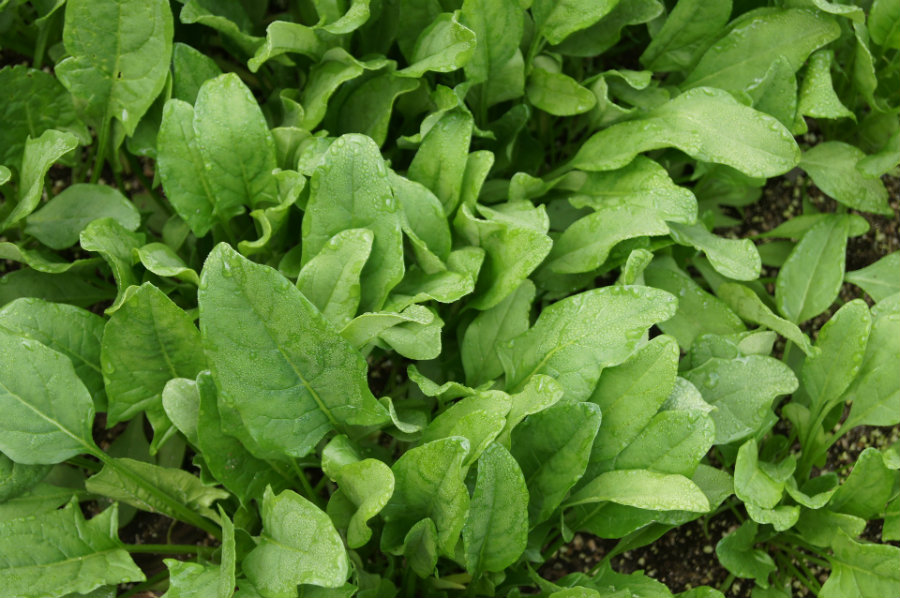A team of scientists from MIT discovered that the spinach plants have carbon-nanotube-based nanoparticles in their leaves. Those nanoparticles give off an infrared light and are sensitive to nitroaromatics, an element found in several explosives. The MIT team assessed the plants – that can absorb the chemicals in less than 15 minutes – infrared signal to detect if the soil was polluted. The findings can change the future for urban farming and agriculture as a whole.
According to the study, bionic plants that are capable of detecting explosives in real time can serve as environmental monitors, bringing new possibilities to farming in the city and the countryside.

The spinach plants were the ones used to do the experiments and test their leaves infrared signals that are sensitive to nitroaromatics. If the soil is polluted with explosives, the spinach plants’ leaves will reflect the information which scientists can read through computers or even smartphones.
Every time something is in contact with the soil, water takes up its elements and makes it part of the groundwater. Plants absorb groundwater which goes to their leaves, then, the leaves take and separate all of its components.
If the groundwater contains nitroaromatics the component will affect the leaves nanosensor, making them decrease their infrared signals. Changes in the infrared signals are what technological devices would read to know if the soil contains explosives or not. The infrared detectors can be as sophisticated as a smartphone.
The team performed tests with the nitroaromatic picric acid and discover that spinach plants can detect the chemical within 10 minutes, making the finding a real-time environmental monitor. The research was published in the journal Nature Materials, Monday. The study lead author is Massachusetts Institute Technology graduate student Min Hao Wong. The experiments were led by Michael Strano, a professor of chemical engineering at MIT as well.
Detecting infrared signals from spinach plants: An entire crop can be monitored
The study included a nanosensor sensitive to a broad range of explosives which can also detect chemicals that are produced as explosive degrade. To read that information, the team used a small infrared camera connected to a $35 Raspberry Pi minicomputer. Strano told LiveScience that the minicomputer was not essential, a smartphone can also do the job if it has its infrared filter removed.
The signals were captured at 3.3 feet (1 meter), although Strano says the sensor should be capable of a much wider range. If the professor is right, one sensor would be able to monitor multiple plants. Along with the nanosensor, there is a second fluorescent nanoparticle that is not sensitive to nitroaromatics and provides a constant infrared signal which serves as a control to compare the other nanosensor.
Strano and his group explained that they want to add more sensors to plants to make their instruments to detect a variety of chemicals through groundwater and also air. The goal is to use nanotechnology to make plants react to different chemicals in superior ways not found in nature.
The research leader said that they want to improve plants ability to monitor their own environment for pest infestations, damage, and drought. Plants are sensitive readers of their physiology and the MIT group wants to extend that monitoring ability to “plants’ own complex signaling pathways.”
“Genetic engineering is very powerful, but in practice, there are only a handful of plants where this can be done. We can take a plant in your backyard and easily engineer it” using nanobionics instead of genetics, stated study leader Michael Strano.
The professor explains that plants are excellent chemical monitors because they have a sensitive network of roots. Plants can draw groundwater using small quantities of solar energy that easily transport any chemicals on the soil the their leaves sensors.
Plants can bring water thanks to a process called “transpiration.” Moisture evaporates from the leaves, which causes water to be drawn from the ground. When water evaporates, chemicals are also drawn, but they are not as easy to evaporate as water. Thus, they get concentrated in the leaves. Transpiration can make plants detect low concentration of chemicals that are later read by infrared sensors.
Strano and Wong already started a company using their study findings. It is called Plantae, and it will commercialize their detectors to people growing crops. Their innovation could be even used in urban farming and change agriculture forever. The market is large because farms need to be “ultra-efficient” not to waste any portion of the land, especially those in urban areas.
Other opinions on the MIT research: The nanosensors could have some flaws
Raffaele Di Giacomo is a postdoctoral scholar at ETH Zurich in Switzerland was not involved in the study but has an opinion about it. Giacomo also works on nanobionics and said he found some difficulties regarding calibration and stability related to the MIT study but argued that the system’s simplicity and low costs compensate the error.
Giacomo believes that in the future, sensing plants will be advertised on TV. According to the scientist, the plants will be in our home and office, and they will send us a signal to our smartphone telling us information about temperature, humidity, oxygen and pollutants, he told LiveScience.
Another professor, Bogdan Dragnea from the Indiana University, said the MIT work on spinach plants sets a milestone toward better monitoring of soil contamination. Dragnea specialized in nanotechnology and was not part of the study. He stated that plants’ sensors could send false positives, but he thinks those flaws will be corrected in the future.
Source: Live Science
